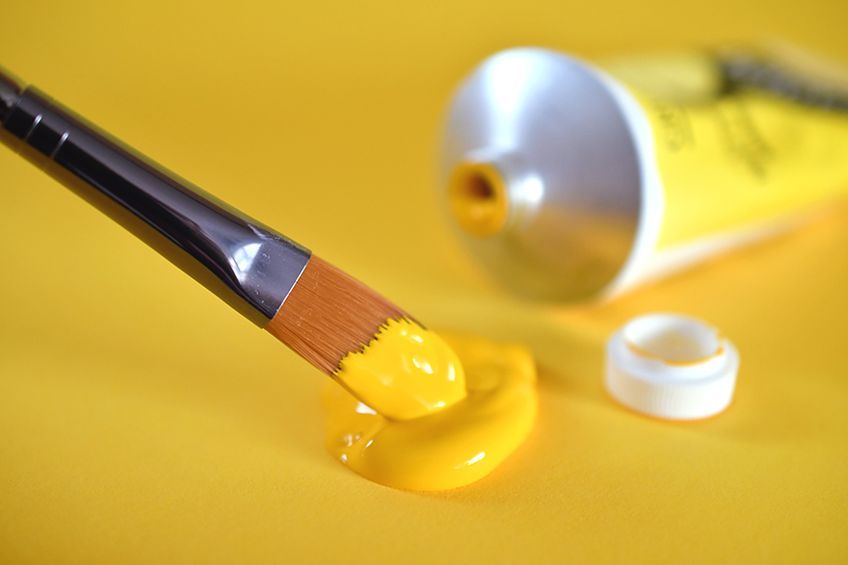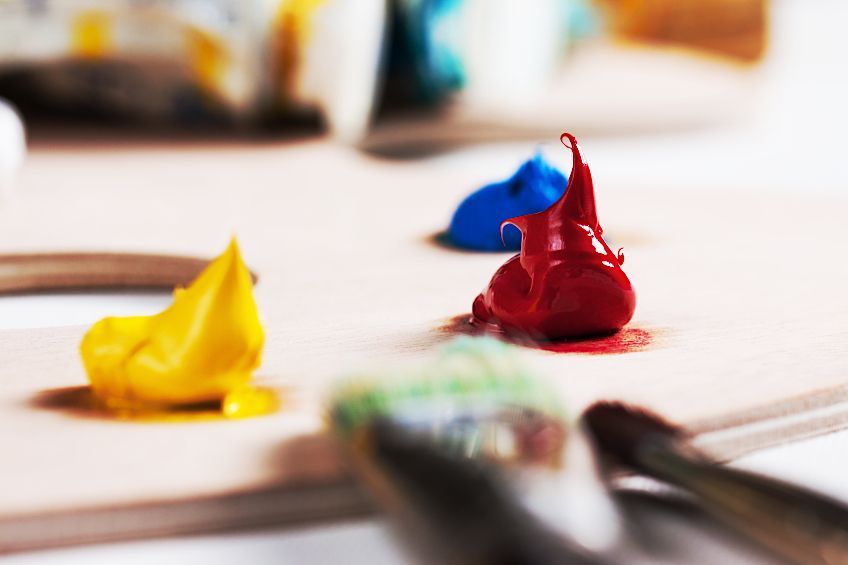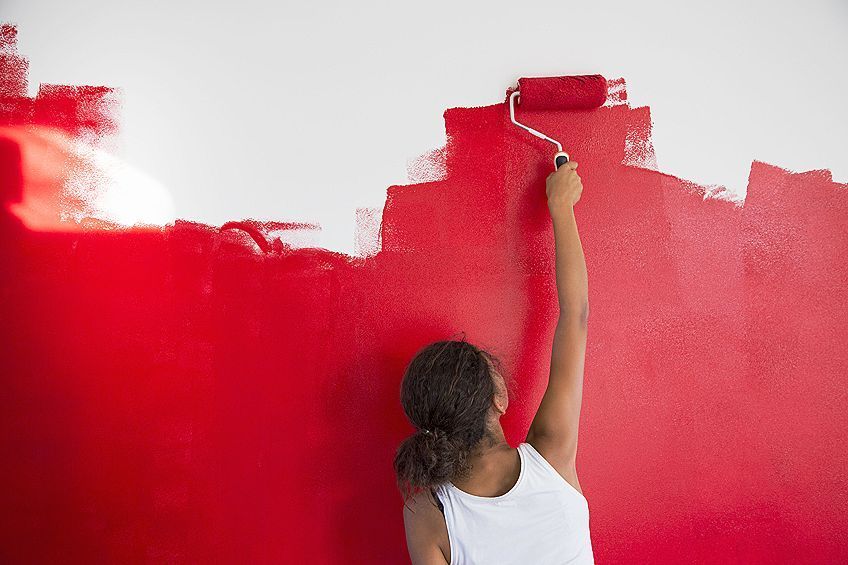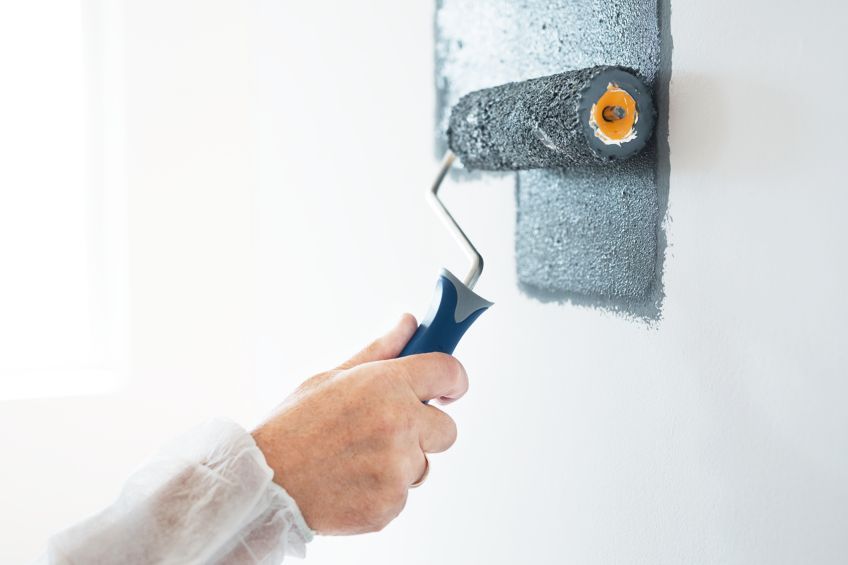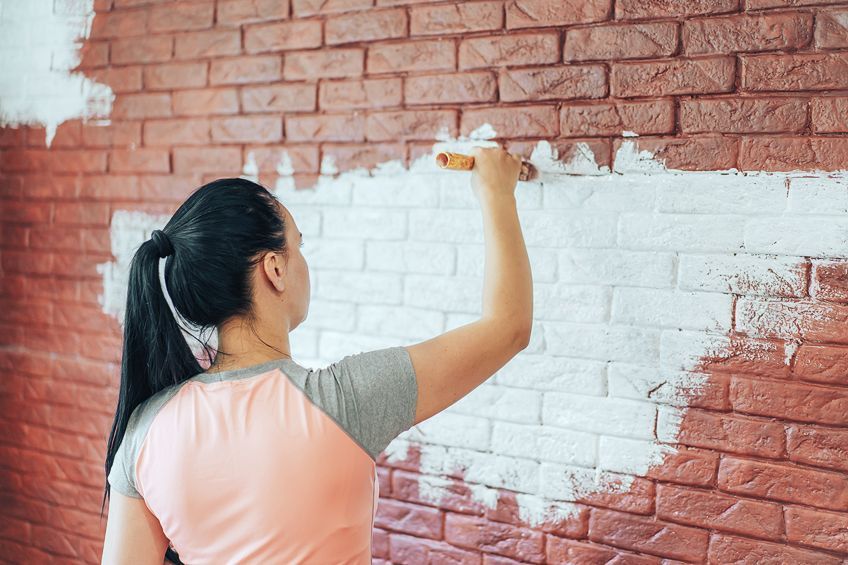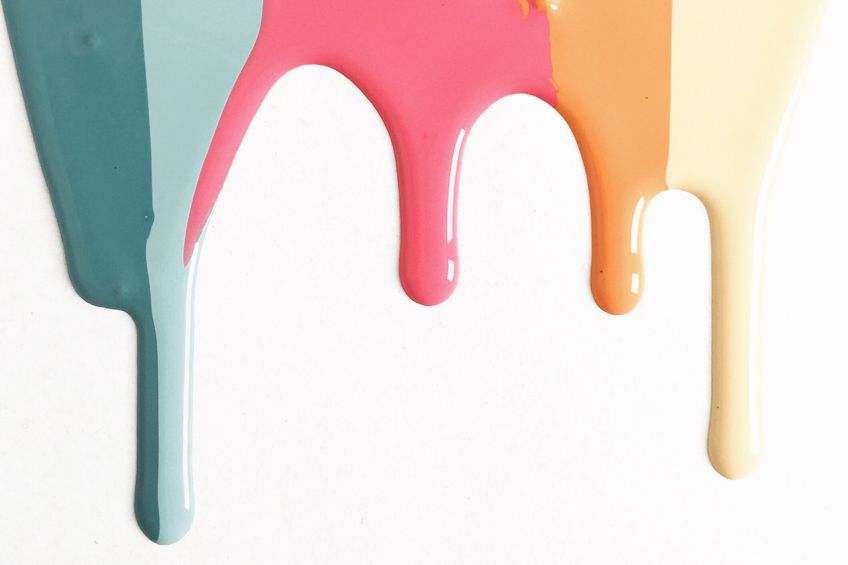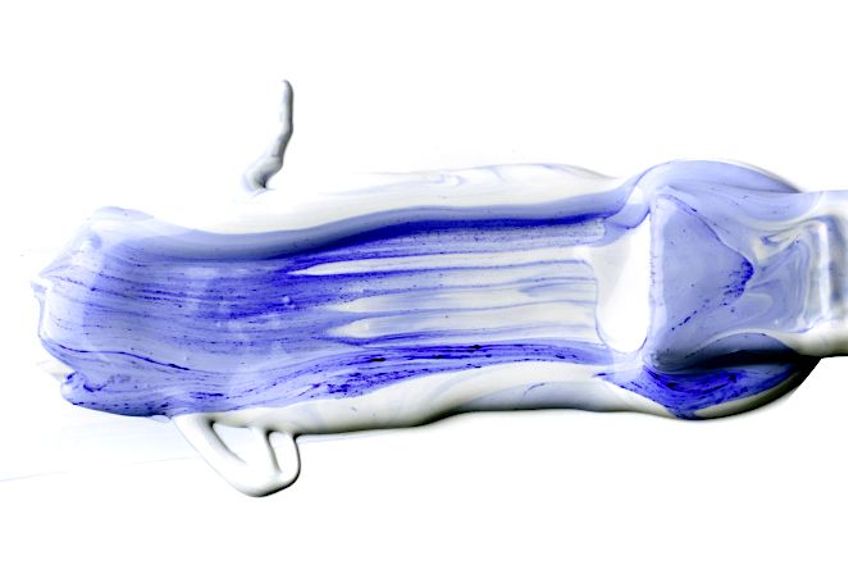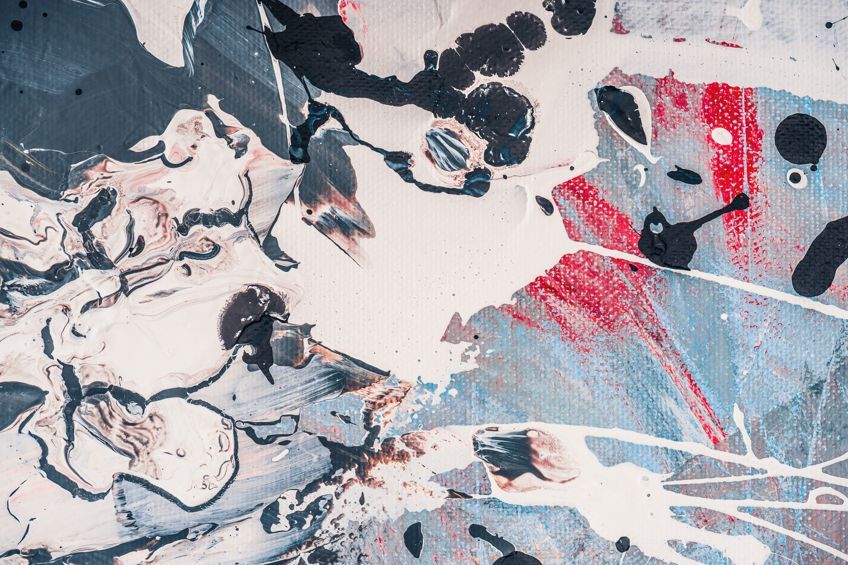Can You Use Acrylic Paint on Walls? – Acrylic Paint Characteristics
This post may contain affiliate links. We may earn a small commission from purchases made through them, at no additional cost to you. You help to support resin-expert.com
We have been using paint for a really long time. Paint allowed our ancestors to depict the story of their lives, myths, legends, and even instructional materials. Paint has come a long way since we mixed animal fat and plant pigments together, and these days we have oil-based paints, latex-based paints, and a crowd favorite, acrylic-based paints. What is acrylic paint though? What sets it apart from other paint types? Can you use acrylic paint on wall surfaces? Let’s have a look at these and a few other commonly asked questions about acrylic paint and its applications.
Table of Contents
What Is Acrylic Paint?
Acrylic paint is kind of the new kid on the block when it comes to paint types. Essentially, acrylic paint can be characterized as pigment and additives suspended in acrylic polymers. These substances combined with binders and solvents create a paint that creates a strong bond with most surfaces and happens to have a wide variety of colors and finishes to choose from.
Before the advent of acrylic paint, the go-to paint type was oil-based paint. Oil-based paints usually consist of a base of natural oils like tung and linseed oil. These oils are mixed with pigments and binders to ensure a good finish. This sounds perfect, right? Well, the downside to oil-based paints is that they contain loads of VOCs (volatile organic compounds) which are bad for people and the environment.
Acrylic paints contain noticeably fewer VOCs by comparison, and as we became more environmentally conscious, they began to be favored more and more. However, they also contain things like silicon, stabilizers, and plasticizers which aren’t great for the environment either.
On the upside, acrylic paint can be made to look like any paint type and texture, including oil-based and latex-based paints!
Can You Use Acrylic Paint on Wall Surfaces?
Can you use acrylic paint on wall surfaces? It would be a bit disappointing if such a popular paint type could not be used on one of the most common surfaces on the planet. Walls consist of many materials, but the ones you’ll tend to encounter the most are brick, concrete masonry, and drywall, all of which can be painted from acrylic paint.
It’s actually pretty advantageous to use acrylic paint instead of oil-based and//or latex based paints. Acrylic paints can be used indoors with greater ease compared to oil-based ones as they don’t produce as many noxious fumes. Acrylic paint is also more durable than latex-based paints and oil-based paints on surface materials, not to mention the fact that they dry much quicker too.
You don’t have to only used acrylic paint indoors though. As we mentioned previously acrylic paint is also extremely durable, featuring an inherent resistance to the effects of heat, UV light, moisture, impact, abrasion, scuffing, and even light prolonged contact with some chemicals. This makes an ideal surface coating for exterior walls and furniture.
Are there any other downsides to acrylic paint? Unfortunately, yes. Acrylic paint cannot be mixed with other paint types, which means you can’t use it to touch up workpieces that have an existing coat of latex or oil-based paint. the price of acrylic paint can also vary considerably depending on the brand and quality being sold.
The Lifespan of Acrylic Paint When Applied to Walls
Like pretty much everything in existence, paint doesn’t last forever. However, acrylic paint does last for a really long time especially compared to other types of paint. To give you a good idea of just how long acrylic paint is capable of lasting, the average coat of latex-based paints may only last around five years in favorable conditions.
Acrylic paint on the other hand can last up to 15 years and could last even longer if cared for correctly. This makes acrylic paint by far the most durable paint type out there right now, but keep in mind that good quality acrylic paint can cost quite a bit of money. However, if you apply a sealer when using a cheaper acrylic paint outdoors it can last for significantly longer.
This doesn’t mean acrylic-based paints are completely invulnerable though. All paint types can be broken down by external forces over time which means that you should consider the type and placement of the paint you’ll be using if the environment could potentially degrade it. What exactly causes acrylic paint to degrade over time though?
One thing that will cause pretty much any paint (except enamel) to break down over time is excessive exposure to heat. This will cause the paint to crack and peel away over time. Excessive exposure to cold temperatures can have a similar effect, causing the paint to shrink and peel away the more the paint is exposed. One factor that affects every paint type is excessive exposure to moisture. Thankfully acrylic paints are pretty resistant to the effects of mold and mildew, but this doesn’t mean that these little guys won’t eventually break through because they paint to lift away from the surface eventually.
Again, using a high-quality sealer can stave off these effects.
How Long Does It Take Acrylic Paint to Dry on Walls?
Using acrylic paint on walls can make for a great aesthetic choice, but it can be frustrating waiting for it to dry. The dry time for most acrylic paints isn’t particularly long, especially compared to their oil-based counterpart. Acrylic paint on walls can take anywhere between two to four hours to dry completely depending on the ambient conditions in your work area.
If you’re applying acrylic paint indoors there are a number of factors you are able to control, however, if you apply acrylic paint outdoors, you’ll pretty much be at the mercy of the elements. What factors can you alter to ensure that your acrylic paint dries in the fastest possible time period you ask?
As we mentioned previously, temperature and humidity play a huge role in a paint’s longevity, but they can also play a part in its drying time.
How do control these factors? Well, you can control the temperature of your immediate environment the same way that you usually would. If your environment is a little too cold, you can use things like a heater or climate control in your home to heat things up. The same applied if things are a little too hot, or you could simply open some windows.
As for moisture, this might be a bit tricky. If you live in an area with loads of humidity it can be tough to speed up the drying time of your paint, if it ends up drying at all. In the best-case scenario, you could use a dehumidifier to draw excess moisture from the air, but this may only be effective within a certain radius. Alternatively, you could simply wait for a day with favorable humidity levels to paint your intended surface.
How Long Does It Take Acrylic Paint to Cure?
Not only does acrylic paint have one of the fastest dry times out of all of the paint types but it also has one of the fastest cure times. Whereas latex paints can take up to 30 days to cure completely, acrylic paints can cure completely in just about a week!
This doesn’t mean that it cannot be touched, as acrylic paint can be touched and even recoated in just a few hours.
How Do You Apply Acrylic Paint?
The application of acrylic paint is just like any other paint type, but you might require less preparation as some acrylic paint formulas are self-priming. This being said, below is a short tutorial detailing how to apply your acrylic paint to a wall surface effectively, not to mention a few things you’ll need to get the job done right.
- Primer
- Acrylic paint
- Paintbrush
- Roller
- Drop cloth
- Sandpaper
- Clean cloths
- Painter’s tray
Prepare Your Workspace
Preparing your workspace is one of the most important aspects of painting. How do you prepare your workspace you ask? Well, you could start by laying down a drop cloth or some old newspaper on the floor of your workspace and the surface of your worktable. Ensure that the coverage you have chosen is secured with some painter’s tape before moving on to the next step. Ensure that you have adequate ventilation in your workspace. Paints contain loads of chemicals that can cause discomfort if inhaled or if they come into contact with your skin and eyes, so be sure that you’re wearing all of the appropriate personal protective gear before you get to painting.
Lastly, ensure that you have all the tools that you’ll need beforehand.
Prepare Your Workpiece
Preparing your workpiece correctly can mean the difference between a good finish and an awful one. Start by cleaning off the surface of your workpiece with some soapy water. Once you’re sure your workpiece is clean allow it to dry before sanding it. Depending on the material in question sanding may or may not be necessary, but most interior walls tend to need a good sanding.
Next, you’re going to want to apply some primer. Give the can a good shake and pour some primer out into your painter’s tray. Next, get some primer on your roller and use it to coat the primary surface of your workpiece, ensuring an even application throughout. Next, grab your brush, get some primer on it and finish off the trim section, and/or hard-to-reach places.
Paint Your Workpiece
Once your primer has been applied allow it to dry and cure for the manufacturer’s recommended time period. Once dry, give your paint a good shake and pour some out into your painter’s tray. Get some paint on your roller, and just as you did with the primer, use it to cover the primary surface of your wall/workpiece. Once most of the workpiece has been painted, grab your brush and fill in some of the trim and other hard-to-reach areas.
Once you’re happy with your paint job, allow the paint to dry completely for the time recommended by the manufacturer or you could allow it to dry for around four hours if you are going to apply a second coat.
Once this time has elapsed you can either give the surface a light sanding and apply a second coat or skip the sanding step and go straight to applying your additional coat. Once you’re done, allow the last coat to dry for the manufacturer’s recommended time period.
How Long Do You Have to Wait After Painting to Hang Things?
Thanks to the characteristics of acrylic paint, you could be waiting a while before you can hang things on the wall. While the characteristics of acrylic paint allow you to apply a second coat relatively soon after the initial one, it could have you waiting a bit longer to hang things like photographs, paintings, and other decorations.
How long should you wait to hang things then? Well, depending on the type of paint and where it is located, you could be waiting as long as 24 hours before you’re able to hang something on your walls. Don’t be fooled if the paint appears dry to the touch, as it’s likely still pretty sticky just beneath the surface.
How Long Should You Wait Before Sleeping in a Room Painted With Acrylic Paint?
If you’ve just found the perfect color for your bedroom and want to know how long you should let your paint degas before you can spend the night in it the answer can vary considerably depending on the type of paint you’re using. Why? Different paints take vary in drying and curing. How long should you wait when using acrylic paint tough? Well, the rule of thumb is that you should wait around a week for the paint to cure and dry completely and ensure that the space you have painted is well-ventilated the entire time.
Failing to do so can result in some pretty intense fume inhalation, so it’s best to allow for the period before sleeping in a freshly painted room.
What to Do After Your Acrylic Paint Has Been Applied
Once your paint has been applied, you’re probably going to want to sit back and admire your handiwork for a while. Once the nostalgia wears off though, there might be some questions you have about your freshly painted wall. Here are a few things you should know about maintaining and cleaning your newly painted wall.
Does Acrylic Paint Wash Off Walls?
Does acrylic paint wash off walls? This depends on the situation you find yourself in. If you are in the process of applying your acrylic paint and decide that it’s not for you, it can be wiped off pretty easily with some soap and water. On the other hand, if you allow the paint to dry completely and want to remove it, you’re going to need a solvent and probably a power sander to get it off.
If you’re wondering how to remove acrylic paint from walls, this is pretty much the only way to go about it. If you’re unsure and want a visual aid, there are loads of YouTube tutorials showing how to remove acrylic paint from walls and various other surfaces.
Sealing Acrylic Paint
You can seal pretty much any type of paint if you have the right sealer. All that you need is some acrylic sealer and you’re pretty much good to go. How do you use it? The same way you would with any other type of sealer. Give your sealer a good shake and pour some out into a smaller container or painter’s tray. Ensure that your final coat of paint has had a chance to dry completely, and then get some sealer on your brush or roller. Apply your sealer in the opposite direction of the paint brushstrokes, ensuring that you get all of the sections that have been painted. Once your sealer has been applied allow it to dry for the manufacturer’s recommended time period.
Once the initial coat of sealer has dried you can apply a second coat too. This is recommended if your workpiece is situated outdoors or is located in a highly trafficked area. Keep in mind that while sealer will ensure that your paint lasts longer, you will sacrifice the feel and look of the paint’s texture should you choose to apply it.
Is Acrylic Paint Waterproof?
Despite the acrylic polymers present in its makeup, there is actually quite a bit of water present in the makeup of acrylic paint. Thanks to this it dries very quickly compared to other paints and it’s really easy to clean up when it’s still wet. Does this mean that acrylic paint is immune to the effects of water? Well, while it may be highly resistant to the effect of water once it’s dried completely this does not mean that it’s waterproof. If your acrylic paint coating is going to be exposed to water constantly, we recommend using a sealer to ensure that the paint’s longevity is ensured.
Consider all the factors before using acrylic paint on a surface.
Painting Over Acrylic Paint
Wondering if you can paint over an existing coat of acrylic paint? Yes, you can. The trick is to use some shellac as a primer and sealer on the existing coat. You can paint over the acrylic base with another acrylic paint or latex-based paint, but oil-based paints won’t do too well. If you are going to do this, we recommend sticking to the same brand if possible.
Why Acrylic Paint Would Fail to Stick to a Wall
Pretty much the same reason that any paint you use fails to adhere. There are a few reasons that paints won’t stick to the surface. The first is that the surface is unclean and that particles are stopping the paint from sticking in certain areas. The second is that you haven’t used the right type of primer or no primer at all. The third would be if there are conditions such as extreme heat, cold, or humidity that are preventing your paint from adhering. Lastly, you could be using acrylic paint with a material that is not compatible with it.
Consider all of these factors when you think that your paint could be sticking to your workpiece a bit better.
Thinning Out Acrylic Paint
Thinning out your acrylic paint is possible, although you should be careful as to how you go about it. The best way is to put a small amount of paint on a palette, add a little bit of water using the tip of your brush, and stir until it reaches the desired consistency. If you want all of your paint thinned out a bit, use a dedicated paint thinner and simply follow the instructions attached by the manufacturer.
Salvaging Acrylic Paint
Can acrylic paints be salvaged once dried? Yes, if your acrylic paint can be salvaged once it has dried up. First off throw some of the dried paint into a separate container and boil some water. Next, add the boiling water to the container and leave it for a few minutes. Once you start to see bits of paint rise to the surface of the water, give the paint a good stir.
Once the paint has been stirred, you should see that it begins to absorb the water nicely. Continue to add a little bit of water as you stir until the paint reaches your desired consistency. Be sure to remove the solid paint particles that have risen to the surface during the restoration process and throw them away.
Once you have the paint thoroughly mixed with the water you through in there, the only thing left to do is test your paint out. Most of the time the paint should work perfectly, having the same consistency and texture once dried on the surface as it did before it got dried up. Be sure to test this beforehand to avoid disappointment.
Tips and Tricks for Getting Better With Acrylic Paint
There are loads of applications for acrylic paint. Whether you’re painting a wall, using it for fine art, or simply sprucing up some woodcraft, there’s a use for acrylic paints in pretty much any occupation imaginable, even if it’s just to make things look a bit nicer. This being said, here are a few tricks you can use to ensure you get the best results with your acrylic paint.
Work Quickly
If you’re applying acrylic paint to any surface, you’re going to have to be quick. Acrylic paint dries quickly, and therefore you have to be sure to get it on your surface as quickly as possible to avoid it partially drying out while you work.
Don’t Use Too Much Paint
Thanks to the perceived consistency of acrylic paint, it can be a bit tough to judge how much you need on your pallet or in your pain tray at any given time.
The best thing to do is to use as little as possible and refill your pallet/tray as needed.
Be Careful How You Blend Colors
As we mentioned previously the consistency of acrylic paint can mess with your head if you’ve never worked with it before. Blending colors or tones too fast can result in a bubbly mixture, so blend gently and start off with a small amount of each color and tone, increasing the paint volume as you go along.
Is Acrylic Paint Better Than Oil Paint?
This is a debate that’s been going on ever since the introduction of acrylic paint. Acrylic paint and oil-based paint are fundamentally different, and therefore it’s hard to compare them, especially considering that they’re often used for different reasons in different applications. Although, when discussing them as a functional surface coating, there are pros and cons to each.
First off acrylic paints dry in around four hours which means that you can apply your second coat and/or sealer as soon as possible.
Oil-based paints on the other hand can take up to six hours to dry, which can leave you a bit despondent when it comes time to apply your second coat or a coat of sealer to your workpiece. Acrylic paint also happens to be a bit more versatile. You should be able to use acrylic paint on most surfaces, including glass and plastic, whereas oil-based paints can only be used on a handful of materials. Oil-based paints also contain more VOCs than your average acrylic pain, making acrylic paint slightly better for the environment.
Lastly, because acrylic paint contains more resinous fibers than its oil-based counterparts they tend to have a more elastic nature. This allows them to “roll with the punches” a lot better than oil-based paints. They can withstand extreme heat, cold, wind, impact, and abrasion, for a lot longer than oil-based paint.
Now that you know what acrylic paint is, whether it can be used on walls, how to apply it, how to remove it, and some of its key characteristics, it is time for you to get out there and put your newfound knowledge to the test. Remember to always wear the appropriate personal protective gear and to ensure your environment is well-ventilated when working with acrylic paint.
Frequently Asked Questions
Can Acrylic Paint Be Used on Walls?
Can acrylic paint be used on walls? Yes, acrylic paint can be used on most wall surfaces including drywall, masonry, brick, and even vinyl surfaces. The inherent nature of acrylic paint allows it to adhere well to most surfaces.
Can Acrylic Paint Be Used Outside?
Can acrylic paint be used outside? Yes, acrylic paint is one of the best paint types to use outdoors thanks to its elastic nature. The resins present in its composition ensure that acrylic paint can withstand impact, abrasion, moisture, heat, and infestation.
Can You Mix Acrylic Paint With Wall Paint?
Can you mix acrylic paint with wall paint? This depends on the types of wall paint you would like to mix it with. If the wall paint has an acrylic base, then this will be possible. However, if it has an oil base, it will not mix well.


